Suppose you have a receiving, dipole, antenna. Ignore the existence of free space around the antenna — ignore that wavelength — and just think about the portion of the electromagnetic field immediately around the antenna. The field exerts a force on the electrons in the antenna, perpendicular to the propagation of the wave (or more precisely, in the same direction as the polarization of the wave). That is where the right angle comes from.
The wavelength of the wave in space is irrelevant, so far, because the antenna elements don't see it, they just see a locally oscillating field.
Now think about what happens in the antenna conductor. There is a force causing the electrons to move (a current). On the other hand, the antenna has ends, and current cannot flow out the end of a wire (outside of conditions that do not apply here).
Consider just the field impinging on some electrons near the middle of the antenna and ignore the rest of the field. They can start to move, and just like any other change in current in a conductor, it propagates, as a wave, along the conductor at a speed close to (but not equal to) the speed of light. When this change reaches one end of the wire, current can no longer flow there, so just like any wave hitting an obstacle it reflects back and reaches its starting point, and there are standing waves within the antenna.
You've indicated that you already understand the idea of sound waves and standing waves in a pipe, so I'll skip going into more detail there. Just note that the proper analogy purely from the perspective of analyzing standing waves is:
- wire end: closed end of pipe — current node — voltage antinode
- middle of dipole: middle of both-ends-closed pipe — current antinode — voltage node
The there is no obvious direct analogy for the interaction of the EM wave since it is spread out along the entire length — it's like you have a series of fans in the pipe, not like an outside pressure wave passing through an opening.
To summarize: the two lengths are similar not because the extent of the wave in free space maps somehow to the extent of the wire despite being at right angles, but rather because there are two wave phenomena of the same frequency and almost the same propagation speed.



